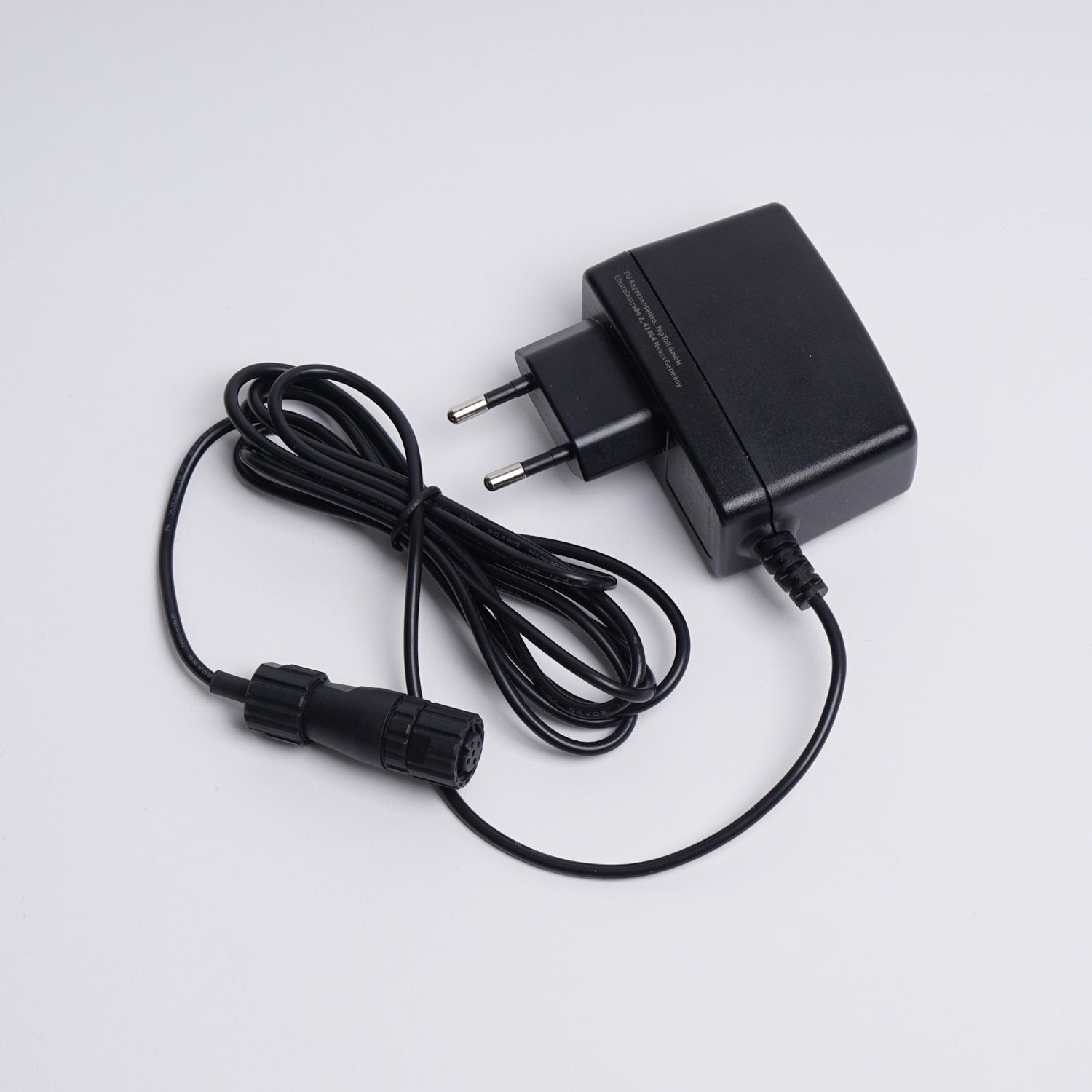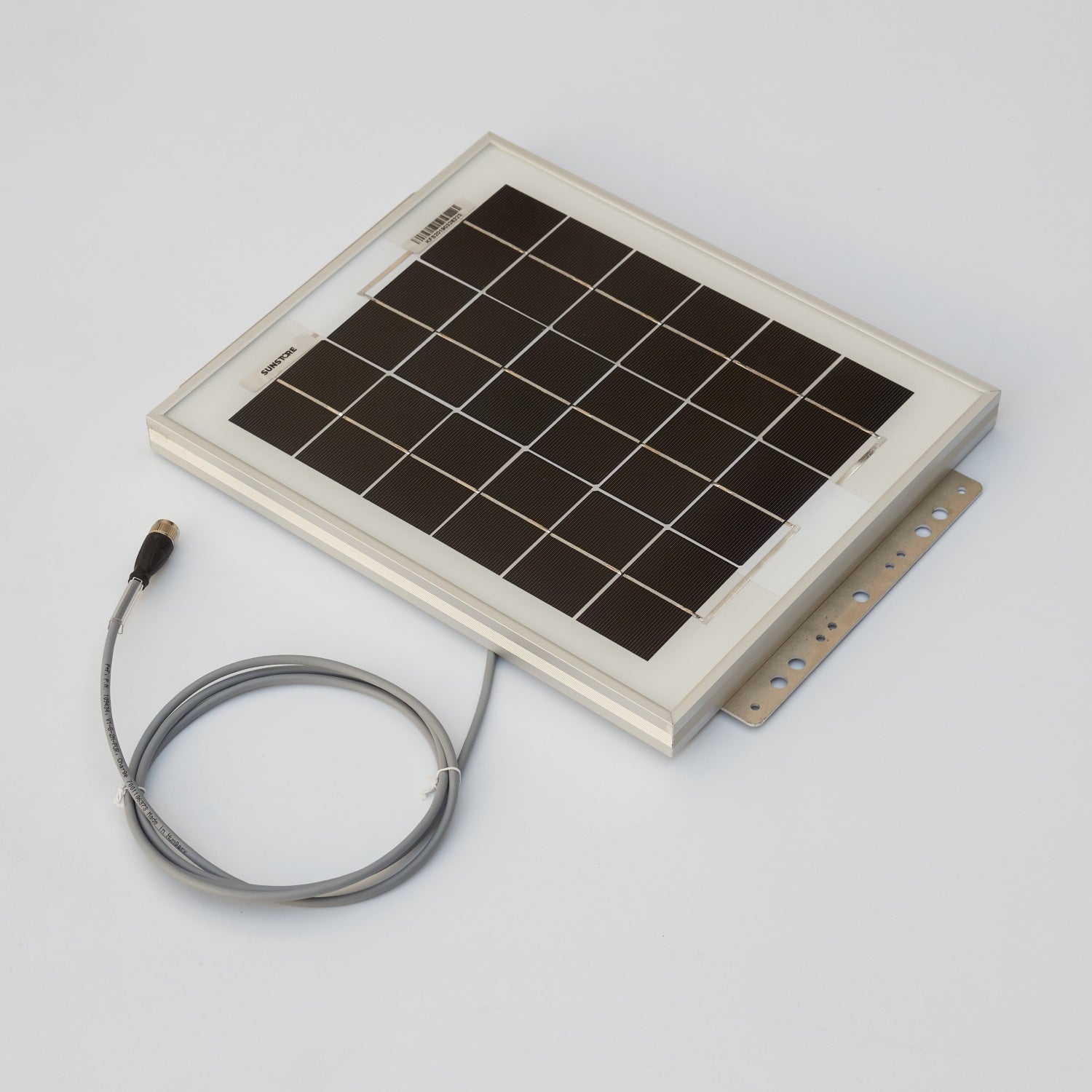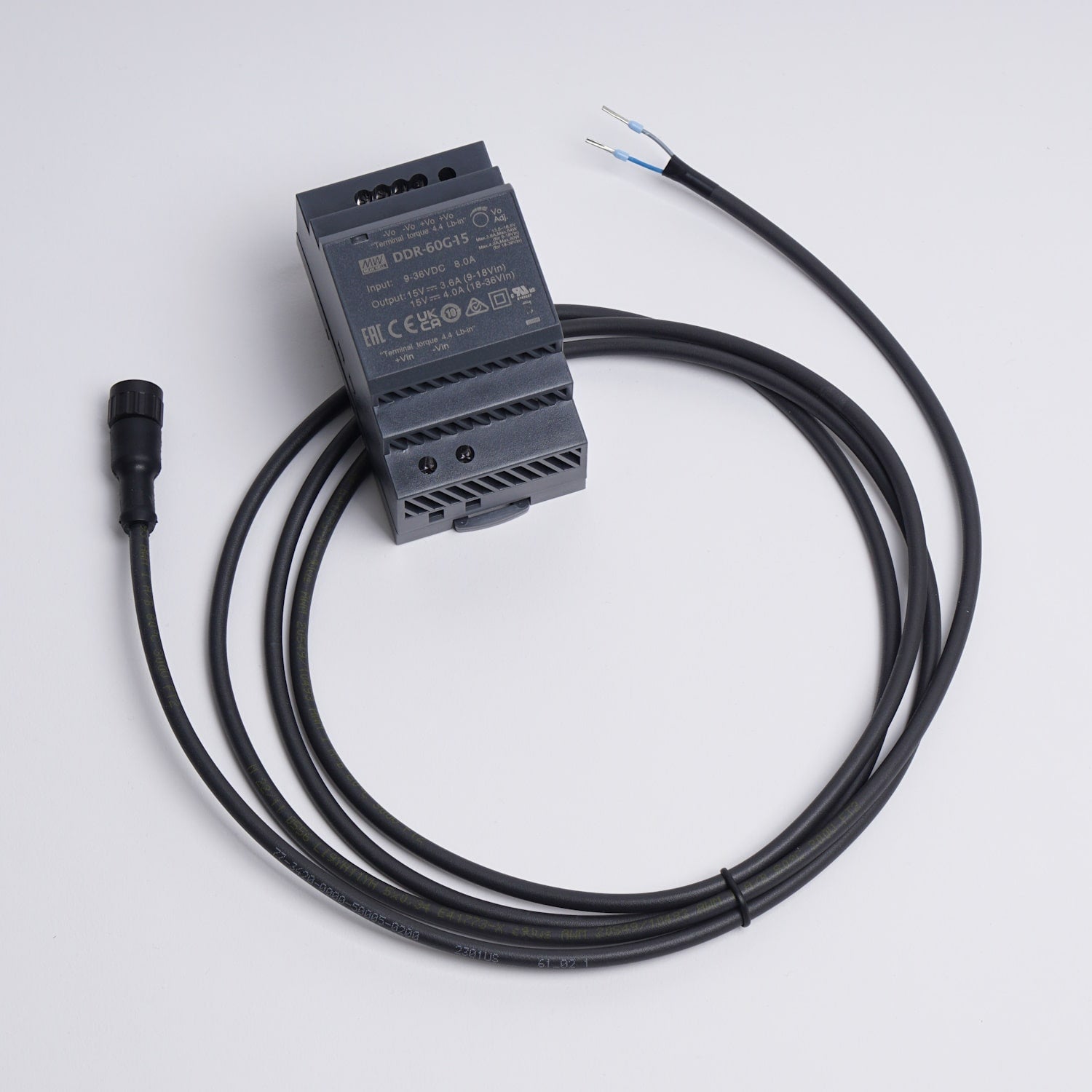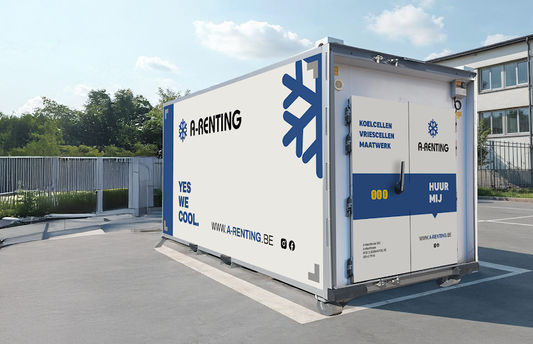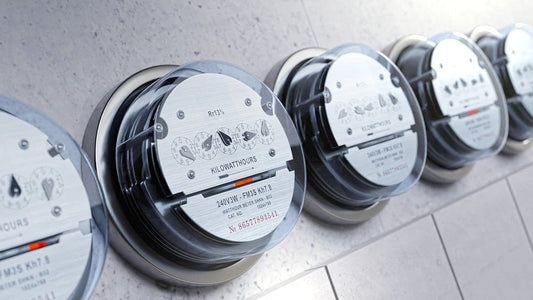Wie wird der Reporter mit Strom versorgt?
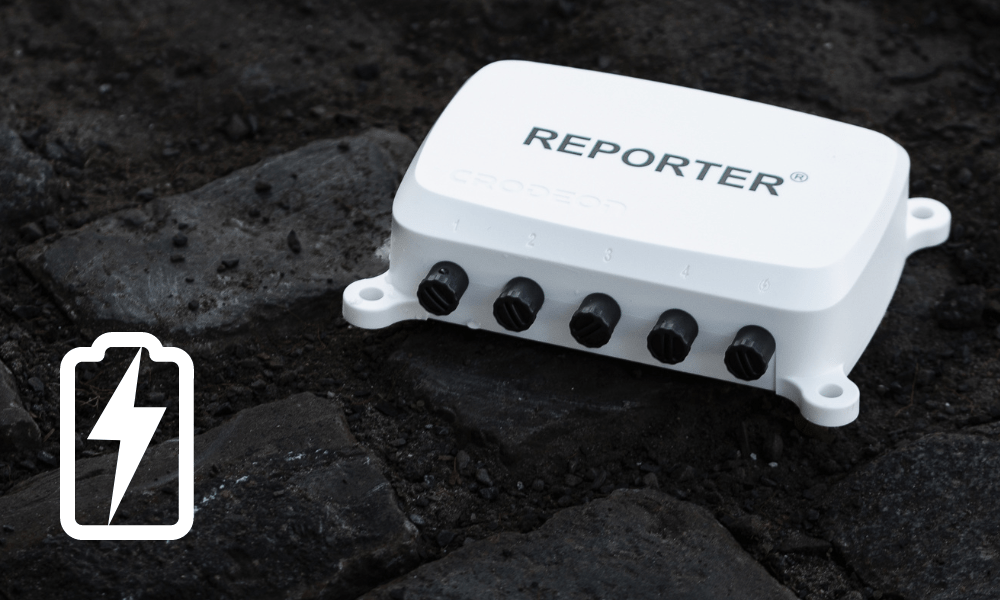
Unser Fernüberwachungssystem Reporter ist sowohl mit Netzstrom als auch mit Solarstrom kompatibel. Jeder Reporter verfügt über einen internen Backup-Akku mit 5200 mAh. Dieser Akku stellt sicher, dass Ihre Messungen auch bei einem Stromausfall fortgesetzt werden, bis Sie das Problem beheben können. Zudem gewährleistet er, dass solarbetriebene Reporter auch in der Nacht weiterhin messen und überwachen.
Je nach Standort und Messprojekt sollten Sie überlegen, welche Option für Sie am besten geeignet ist.
Netzstrom
In dichter besiedelten Gebieten können Sie sicher sein, dass eine Steckdose zur Verfügung steht. Wenn Ihr Projekt dies zulässt, ist die einfachste und zuverlässigste Stromquelle der Netzstrom. Zudem können Sie so auch Stromausfälle überwachen, falls diese auftreten sollten.
Wann Sie Netzstrom für Ihren Reporter nutzen sollten
Wir empfehlen die Nutzung von Netzstrom in folgenden Situationen:
- Bei Indoor-Projekten
- Bei Projekten, bei denen das Ladegerät in eine geschützte Steckdose eingesteckt werden kann
- Bei Projekten, bei denen Sie das Stromnetz oder einen Generator überwachen möchten, um Stromausfälle zu erkennen
- Bei Outdoor-Projekten, bei denen nicht genügend Tageslicht für ein Solarpanel vorhanden ist
- Bei Outdoor-Projekten, die Hochleistungssensoren benötigen
Der Netzstecker hat die Schutzklasse IP22, was bedeutet, dass er nicht im Freien oder in feuchten Umgebungen verwendet werden darf. Das bedeutet, dass selbst wenn Sie eine IP44-Steckdose an Ihrer Außenwand haben, Sie diese nicht zum Laden oder Betreiben Ihres Reporters nutzen können. Gleiches gilt für Messungen auf einer Baustelle oder einem Forschungsgelände: Sie dürfen den Netzstecker nicht in eine „offene“ Verteilerbox einstecken.

Stromausfall-Alarm
Falls Ihr Netzstrom aus irgendeinem Grund ausfallen sollte, erkennt der Reporter dies. Sie haben die Möglichkeit, einen Stromausfall-Alarm zu aktivieren, sodass Sie eine Benachrichtigung erhalten, wenn es zu einem Stromausfall kommt. Wir empfehlen nicht, diesen Alarm bei der Nutzung von Solarstrom zu aktivieren, da Sie sonst jede Nacht eine Benachrichtigung erhalten würden, wenn die Sonne untergeht.
Solarstrom
In abgelegenen Gebieten ist oft keine Steckdose verfügbar. Die Nutzung eines Solarpanels zum Laden und Betreiben Ihres Reporters kann dieses Problem auf einfache Weise lösen. Solange ausreichend Tageslicht vorhanden ist, kann sich der Reporter selbst aufladen. Diese Solarlösung erweitert die Einsatzmöglichkeiten des Reporters erheblich.
Wann Sie ein Solarpanel für Ihren Reporter nutzen sollten
Wir empfehlen den Einsatz eines Solarpanels in folgenden Situationen:
- Bei Outdoor-Projekten, bei denen keine (geschützte) Steckdose vorhanden ist
- Bei Outdoor-Projekten, die einem Blitzeinschlag ausgesetzt sein könnten
- Bei Outdoor-Projekten, bei denen Sie weder das Stromnetz noch einen Generator überwachen müssen
Wenn Sie eine Installation wie eine Wetterstation auf der Spitze eines Berges platzieren möchten, besteht die Gefahr eines Blitzeinschlags. Um zu verhindern, dass die hohe elektrische Ladung direkt in Ihr Stromnetz oder Ihre Kabel gelangt und Schäden verursacht, empfehlen wir die Nutzung eines Solarpanels. Falls Ihre Installation getroffen wird, ist das Risiko, dass andere angeschlossene Geräte beschädigt werden, geringer.

Bevor Sie ins Feld gehen
Bevor Sie Ihren Reporter mit seinem Solarpanel im Freien aufstellen, empfehlen wir, die interne Batterie vollständig aufzuladen, indem Sie Netzstrom verwenden. Jeder Reporter wird mit einem Standardladegerät geliefert, mit dem Sie dies tun können. Im Crodeon Dashboard können Sie den Batteriestatus Ihres Reporters einsehen.
Falls Sie dies vergessen, kann es dazu führen, dass der Reporter mehr Zeit benötigt, bevor das Gerät vollständig hochfährt und mit den Messungen beginnt. Es ist daher am besten, dies im Voraus zu vermeiden.
DIN-Schienen-Netzteil
Manchmal sind weder Netzstrom noch ein Solarpanel mit Ihrem Fernüberwachungsprojekt kompatibel. In solchen Fällen kann ein DIN-Schienen-Netzteil eine Lösung für Ihr Problem sein. Dieses Strommodul wandelt 9-36V DC in 15V um und ist damit perfekt geeignet, um Ihr Reporter-Sensormodul mit Strom zu versorgen.
Das Ladegerät wird mit einem 2 m langen offenen Ende zu M12-Kabel geliefert, um eine einfache Verbindung zum Ladeanschluss Ihres Reporters zu ermöglichen.
Interner Akku
Wenn der Reporter an das Stromnetz oder sein eigenes Solarpanel angeschlossen ist, wird der interne Lithium-Ionen-Akku aufgeladen. Das bedeutet auch, dass der Reporter bei einem Stromausfall, bei fehlendem Sonnenlicht oder wenn er vom Netz getrennt wird, weiterhin über eine Notstromversorgung verfügt. Der Reporter enthält einen 3,6V 5200 mAh Lithium-Ionen-Akku.
Dieser interne Akku kann den Reporter mindestens eine Woche lang mit Strom versorgen. Wir empfehlen jedoch, das Gerät an eine zuverlässige Stromquelle anzuschließen, um eine durchgehende Nutzung sicherzustellen.
Akkuwarnung bei niedrigem Ladestand
Der Reporter verfügt über eine integrierte Warnfunktion für einen niedrigen Akkustand. Sobald das Gerät kurz davor ist, sich aufgrund einer fast leeren Batterie abzuschalten, sendet es Ihnen eine Warnmeldung.
Spannung
Der Reporter arbeitet mit Niederspannung, was bedeutet, dass er immer ein Netzteil benötigt, wenn er mit dem 230V-Stromnetz verbunden wird. Es ist äußerst wichtig, dass Sie das richtige Netzteil für Ihren Reporter verwenden, da eine falsche Spannung das Gerät beschädigen könnte. Jeder Reporter wird mit einem kompatiblen Netzteil geliefert, und wir empfehlen dringend, nur dieses zu verwenden. Wenn Sie 230V direkt vom Stromnetz an den M12-Anschluss anschließen, wird der Reporter irreparabel beschädigt.
Der Unterschied zwischen zwei Generationen des Reporters
Ende 2022 haben wir eine neue Generation des Reporters auf den Markt gebracht. In der Abbildung unten sehen Sie das neue Modell (links) und das alte Modell (rechts). Sensoren und Ladegeräte sind nicht austauschbar zwischen diesen beiden Systemen, da sie technologisch inkompatibel sind.

Falls Sie Besitzer von Reportern unterschiedlicher Generationen sind, ist es äußerst wichtig, dass Sie alte und neue Netzteile sowie Solarpanels niemals vertauschen. Die beiden Systeme arbeiten mit unterschiedlichen Spannungen und elektrischen Flussrichtungen.
-
Wenn Sie ein altes Netzteil oder ein altes Solarpanel mit einem neuen Reporter verbinden, wird Ihr Reporter beschädigt.
-
Wenn Sie ein neues Netzteil oder ein neues Solarpanel mit einem alten Reporter verbinden, wird das System einfach nicht funktionieren und nicht laden. Ihr Reporter wird dabei jedoch nicht beschädigt.
Falls Sie beide Systeme besitzen und Fragen zur Kompatibilität haben, kontaktieren Sie uns bitte.
Wie Sie den Unterschied zwischen den beiden Modellen von Ladegeräten und Solarpanels erkennen
|
Neuer Reporter
|
Alter Reporter
|
|
|---|---|---|
| Anzahl der verbundenen Pin-Löcher im weiblichen M12-Stecker | 5 (4 äußere Löcher + das mittlere Loch) | 4 (4 äußere Löcher) |
| Ladegerät-Stecker | 18V Ausgangsspannung | 12V Ausgangsspannung |
| Solarpanel | 18,2V Ausgangsspannung (Vmp) | 9,25V Ausgangsspannung (Vmp) |
Der neue Reporter hat eine maximale Eingangsspannung von 20V, während der alte Reporter eine maximale Eingangsspannung von 12V hat.
Häufig gestellte Fragen zu Reporter und Stromversorgung
Wie wird der Reporter aufgeladen?
Der Reporter kann über das Stromnetz oder ein kompatibles Solarpanel aufgeladen werden.
Wie groß ist die Batterie des Reporters?
Die neueste Version des Reporters verfügt über eine 3,6V 5200 mAh Lithium-Ionen-Batterie.
Wie lange kann der Reporter ohne Stromversorgung arbeiten?
Wenn der Akku zuvor vollständig aufgeladen wurde, kann der Reporter nach einem Stromausfall noch etwa eine Woche lang weiterlaufen.
Welche Spannung nutzt der Reporter?
Das neueste Modell des Reporters arbeitet mit etwa 18-20V.
Benötigt der Reporter ein Netzteil?
Ja, der Reporter ist nicht direkt mit 230V kompatibel und benötigt immer ein Netzteil.
Welches Solarpanel verwendet der Reporter?
Der Reporter ist mit seinem eigenen Solarpanel kompatibel. Dieses kleine, aber robuste Panel ermöglicht es dem Reporter, vollständig mit Solarenergie betrieben zu werden.
Wie kann ich ein Netzteil für den Reporter kaufen?
Im Crodeon-Webshop verkaufen wir Netzteile, die mit unseren Geräten kompatibel sind. Sie finden das Netzstrom-Ladegerät hier oder können uns kontaktieren, falls Sie Beratung benötigen.
Wie kann ich ein Solarpanel für den Reporter kaufen?
Im Crodeon-Webshop verkaufen wir Solarpanels, die mit unseren Geräten kompatibel sind. Sie finden das Solarpanel hier oder können uns kontaktieren, falls Sie Beratung benötigen.
Nutzen verschiedene Generationen des Reporters unterschiedliche Netzteile und Solarpanels?
Ja, die verschiedenen Generationen des Reporters arbeiten mit unterschiedlichen Spannungen und die Pins im M12-Anschluss sind unterschiedlich angeordnet. Daher sind die Netzteile und Solarpanels der Systeme nicht untereinander austauschbar.

